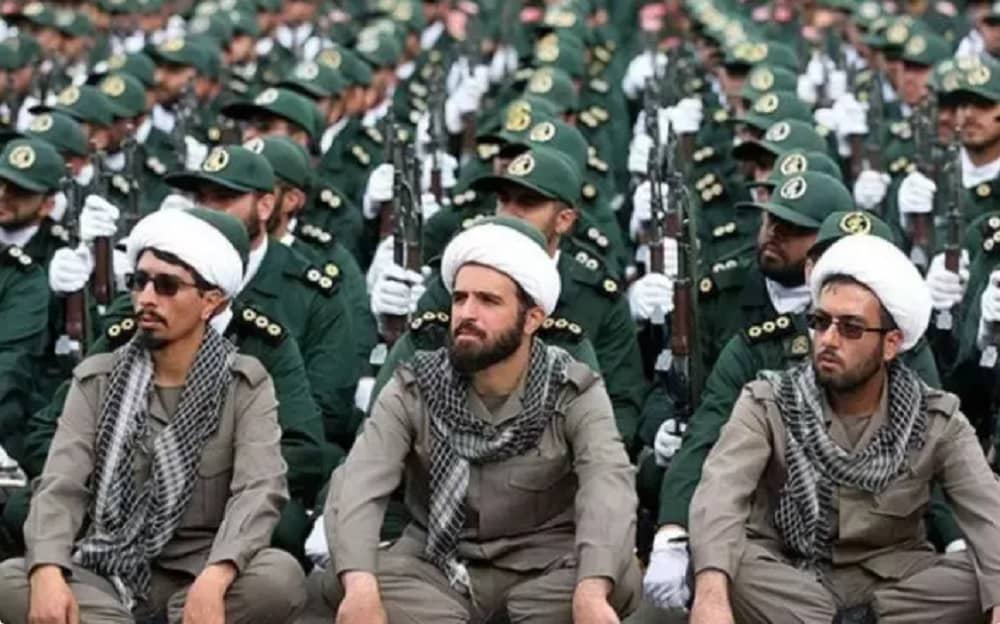
The escalating crisis in the Middle East has entered its third week, and the global spotlight has zeroed in on a primary actor deemed responsible for the chaos: the Islamic Revolutionary Guard Corps (IRGC).
Increasingly, leaders and legislators worldwide are demanding accountability. Notably, members of both the Houses of Commons and Lords in the United Kingdom are appealing to Downing Street and the Secretary of Foreign Affairs to officially designate the IRGC as a terrorist organization. Echoing these sentiments, The Telegraph based in London highlighted on October 21 the similar push from Washington.
This call is not isolated. Across the United States and the European Union, a multitude of policymakers, analysts, and lawmakers are advocating for a definitive stance against what many label as the primary state sponsor of global terrorism. Indications suggest that Ali Khamenei, the Supreme Leader of the Iranian regime, attempted to deflect from mounting internal dissension by inciting turmoil in the Middle East. However, it appears this strategy has backfired, leading to considerable geopolitical and internal repercussions.
Despite attempts by Khamenei on October 12 to tone down his aggressive stance and disassociate from the recent upheavals, the regime’s entrenched history of interference remains a lingering shadow. The leader now grapples with a catch-22: abandon the very factions he has bolstered or brace for the ensuing fallout.
Today @Europarl_EN passed a resolution, urging EU to #BlacklistIRGC, Basij & Quds Force as terrorist entities; calling for sanctions on Khamenei, Raisi & #IRGC foundations.
A necessary step to counter the world’s largest terrorist organization & repressive regime. pic.twitter.com/yDs35toojc— Maryam Rajavi (@Maryam_Rajavi) January 19, 2023
Yet, an underlying hesitation persists among Middle Eastern and Western leaders, primarily driven by the dread of igniting another regional conflagration. This reluctance fundamentally arises from the international community’s longstanding oversight in addressing Islamic Fundamentalism. The Iranian Resistance has persistently raised alarms over this threat for the past thirty years. Decades of appeasing policies have fortified Tehran, and now, the global community, despite recognizing the problem, seems tentative about the solution.
Recent events add another layer to the complexity. On October 22, explosions decimated the IRGC headquarters in Eshrat Abad, Tehran, undermining the aura of invincibility Khamenei seeks. Notably, since 2016, dissident Iranian youths have routinely targeted the regime’s vast security and intelligence infrastructure.
Daring operations by hundreds of Iranians determined to confront the regime’s intimidation tactics largely go unnoticed by Western media, resulting in analysts being caught off-guard during nationwide Iranian uprisings.
Any form of killing of innocent civilians provides fuel to religious fascism in #Iran. Unfortunately, the western governments have ignored three decades of warning and revelations of the Iranian Resistance about the regime’s warmongering, particularly the role of the IRGC and the… pic.twitter.com/qI3RiMNhv3
— Maryam Rajavi (@Maryam_Rajavi) October 25, 2023
However, the oppressed, battling systemic corruption and constant political deceit, have taken note. A growing dissident faction within Iran, molded by cumulative experiences of hardship, has been burgeoning. Their steadfast resistance culminated in the 2022 nationwide uprising, marking the culmination of persistent efforts.
As the Iranian populace displays resilience against the regime’s intimidation, the world must eschew its passive stance. Rather than getting mired in prolonged risk evaluations, international actors should acknowledge the brewing storm. The Iranian people have shown their resolve, and it’s high time the world stands by them, ensuring that their path to liberation remains unobstructed.

MEK Iran (follow us on Twitter and Facebook), Maryam Rajavi’s on her site, Twitter & Facebook, NCRI (Twitter & Facebook), and People’s Mojahedin Organization of Iran – MEK IRAN – YouTu
